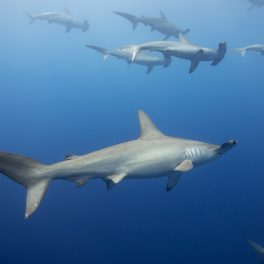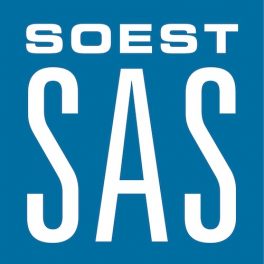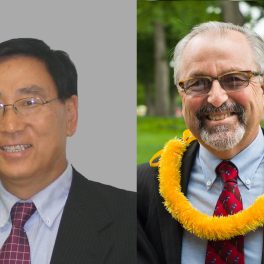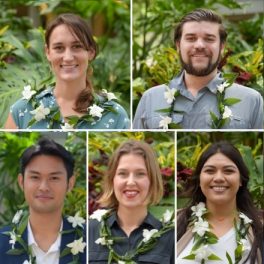Long fascinated by volcanoes, languages and cultures, Kayley Rolph is pursuing their diverse interests, individual identity and community connection at the University of Hawai‘i (UH) at Mānoa. Rolph is nearing completion of an undergraduate degree in Earth sciences in the School of Ocean and Earth Science and Technology (SOEST), has completed a certificate in Women, Gender, and Sexuality Studies focused on queer studies, and will soon begin Khmer language classes.
“Ever since I spent a summer on the Big Island remodeling a house with my family, I planned on returning to Hawai‘i,” said Rolph. “The extensive research opportunities at UH, as well as the beautiful beaches and mountains all drew me here, but it’s the people who I have found community with here that make me want to stay.”
In SOEST, Rolph has been working as a lab assistant with Earth sciences professor Bruce Houghton. In that role, they analyze the density of various rock types, such as scoria and reticulite, from Kīlauea volcano and assist with Caroline Tisdale’s research by doing imaging work on ultraHD video footage of a Kīlauea vent eruption to determine how the velocities of rock fragments changed over time.
“I’ve enjoyed being in the Earth Sciences department,” said Rolph. “With such a small department, it was easier to develop relationships with faculty members as well as my peers. I am thankful to my advisor Sloan Coats for being very supportive of my interests and patiently helping me troubleshoot registration every semester.”
Passion for languages
Another passion of Rolph’s is learning new languages, a pathway for delving into new cultures, they shared. Growing up in California, Rolph attended a dual immersion elementary school from kindergarten to sixth grade where many classmates and teachers spoke Spanish, often as their first language. Through much travel and living in Spain for three months, Rolph’s curiosity grew and they continued with Spanish language courses in high school and during community college.
“Because of UH’s unique placement between Asia and America, I became very interested in utilizing the multitude of eastern language classes offered here,” Rolph said. “I took two introductory Korean language courses in 2022 and just registered to take Khmer 101 in the fall. My interest in learning Khmer stems from my family, as I am half Cambodian and much of my family speaks Khmer as a first language. I am really excited to be able to talk to my family in Khmer!”
Understanding identity, relationships, the world
In a new program offered at UH Mānoa, Rolph completed a queer studies certificate that requires students to take courses that apply critical thinking skills to explore topics of sex, sexuality, gender, feminism, and queer theory.
“As a mixed race, nonbinary, bisexual human, exploring these topics is very important to my understanding of my identity, my relationships, and the world around me,” Rolph shared. “These courses as well as my individual scholarship of Queer theory has provided me with the tools I need to remain critical of systems of oppression, yet be able to imagine a future for myself and my community where our needs are met and our intimate relationships with each other and the Earth are healthy and generative.”
In the fall of 2023, Rolph will be graduating and hopes to find employment as a hydrogeologist or volcanologist at the O’ahu Board of Water Supply or the Hawai‘i Volcano Observatory.
“I would also be very happy with a job as an environmental consultant or working in conservation doing the important work of preserving our precious natural resources,” they added. “After a couple years working in the field, I hope to get into graduate school and pursue a master’s degree.”
Read also on UH News.





















